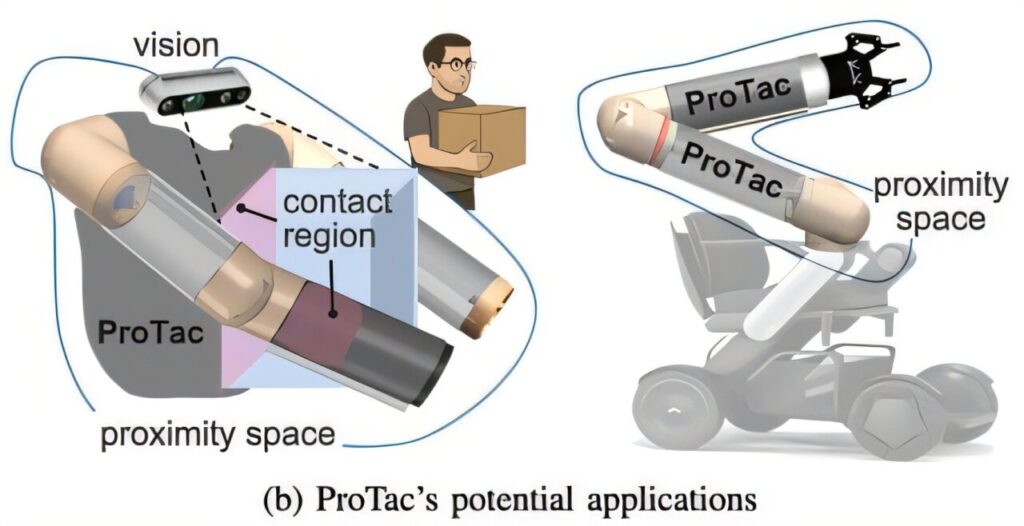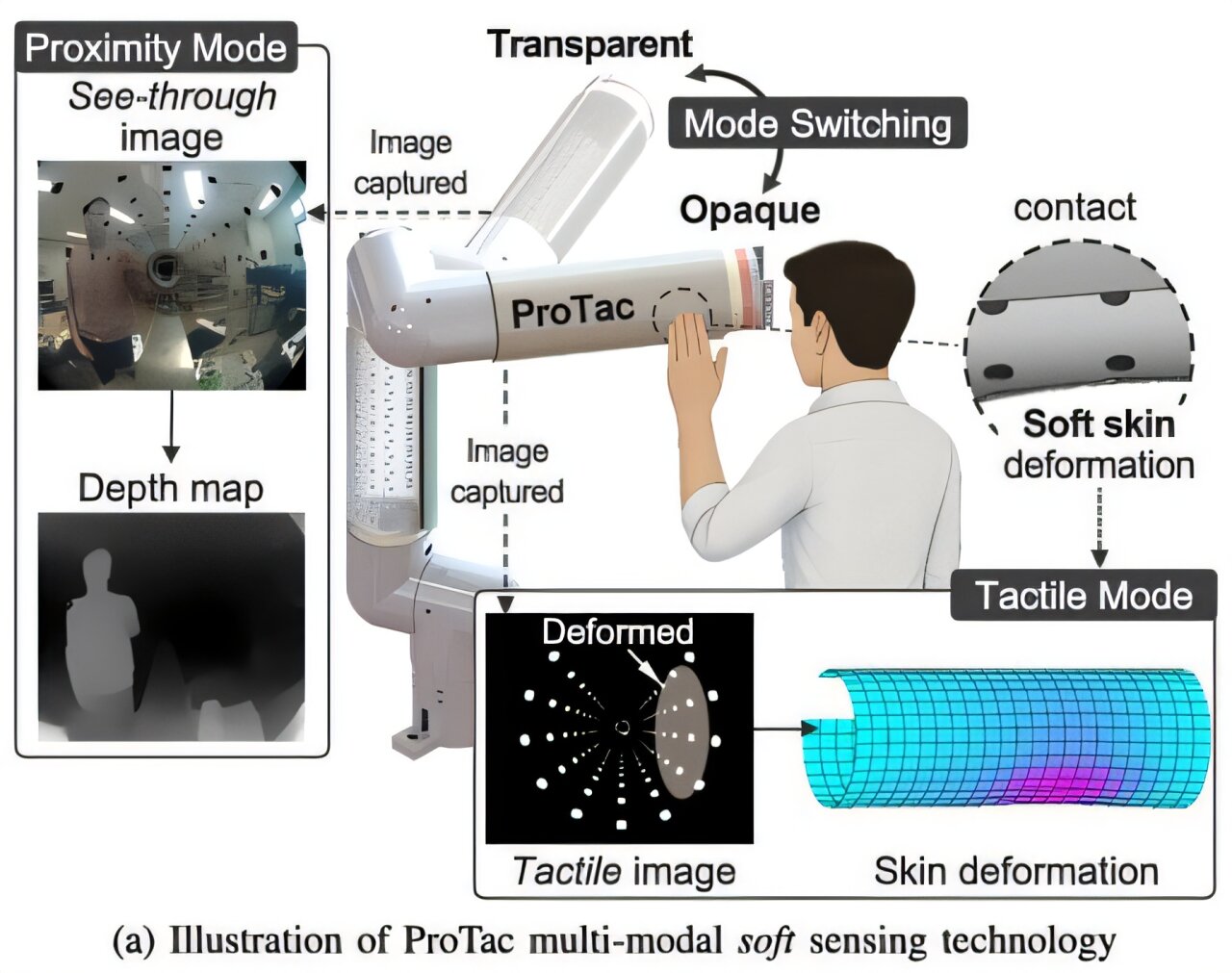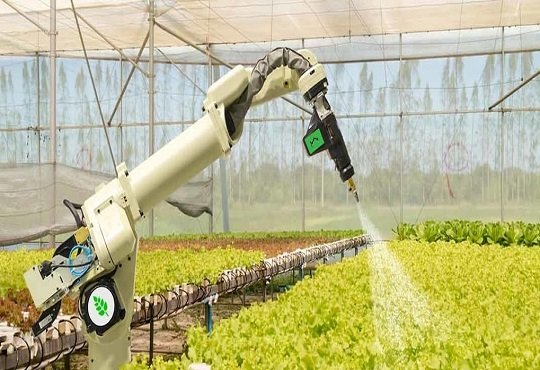Robots are no longer confined to science fiction or factory floors. They are entering our homes, hospitals, farms, and workplaces, working side by side with people. But to safely share human environments, robots need more than mechanical strength or programmed precision. They need awareness. They must sense the world around them, detect when they are touched, and respond instantly to avoid accidents.
Traditional sensors can help, but they often fall short. Most electronic skins and tactile systems are complex, fragile, or limited in coverage. Soft materials that could cover a robot’s entire body tend to lack the ability to provide fast, detailed feedback. This leaves a crucial gap: how can we make robots that not only see but also feel—and do so across large areas in real time?
A Breakthrough in Robotic Skin
A research team at the Japan Advanced Institute of Science and Technology (JAIST), led by Professor Van Anh Ho and Dr. Quan Khanh Luu, has taken a remarkable step toward solving this problem. On July 28, 2025, their study, published in IEEE Transactions on Robotics, introduced ProTac, a vision-based soft sensing skin that allows robots to sense both touch and proximity using a single, elegant design.
At the heart of ProTac is a material called polymer-dispersed liquid crystal (PDLC). This layer can switch between transparent and opaque when voltage is applied. When transparent, cameras hidden beneath the skin can “see” through it, detecting nearby objects before contact occurs. When opaque, the same cameras track how the skin deforms, giving the robot information about pressure, location, and the type of contact.
This dual ability means ProTac provides robots with two senses—touch and near-field vision—without requiring complex, embedded electronics. It is like giving robots both eyes and nerves in one soft, flexible layer.
Bringing ProTac to Life
To demonstrate their innovation, the researchers created a prototype called the ProTac link. This cylindrical robotic arm segment is wrapped in ProTac skin and equipped with stereo cameras at both ends. The system allows the arm to detect approaching objects, estimate distances, and recognize multiple points of contact with remarkable accuracy.
The prototype doesn’t just sense—it reacts. When something comes close, the arm can slow down or stop, reducing the risk of collisions. If touched, it can respond reflexively, much like a human instinctively pulls back when touched unexpectedly. These adaptive behaviors mark an important step toward robots that move safely and naturally in human environments.

“This innovation with sensor design simplicity allows robots to perceive both contact and nearby obstacles across a large-area skin in real time, which is difficult to achieve with conventional electronic skins,” explained Prof. Ho.
A World of Applications
The potential uses of ProTac are vast and deeply human-centered. In factories, collaborative robots could detect workers approaching and automatically adjust their movements, reducing the risk of injury. In elder care, service robots could offer physical support—helping someone stand up or walk—while maintaining safe and gentle contact. In agriculture, soft robots equipped with ProTac could handle delicate crops without damaging them.
Dr. Luu envisions ProTac enabling dexterous robotic manipulation in any setting where delicate physical interaction is critical. Whether grasping fragile objects, assisting patients in hospitals, or navigating cluttered homes, ProTac offers a way for robots to interact safely, responsively, and intuitively.
Toward Humanoid Robots with a Sense of Touch
Perhaps the most exciting vision lies further ahead. With scalable design, ProTac could one day cover the entire body of humanoid robots. This would give them full-body tactile and proximity sensing, making interactions with people far safer and more natural.
“In the long term, this research lays the groundwork for intelligent general-purpose humanoid robots equipped with full-body multimodal soft sensing skins, especially those with a sense of touch,” said Dr. Ho.
The Power of Open Innovation
Importantly, the JAIST team is not keeping their breakthrough behind closed doors. They have released design files, models, and software as open-source resources, inviting the global robotics community to build upon their work. By doing so, they hope to accelerate the development of safer, more adaptive robots for society.
ProTac embodies a simple yet powerful philosophy: by combining mechanical simplicity with multimodal perception, robots can come closer to understanding the complex, tactile world humans inhabit. It is a reminder that intelligence is not only about computation or vision—it is also about touch, presence, and the ability to adapt to the unpredictable.
A Future Within Reach
Robots that sense touch like humans once seemed like the stuff of imagination. Today, thanks to innovations like ProTac, that future is within reach. This technology doesn’t just improve machines—it redefines how they can coexist with us. It opens the door to robots that care for the elderly, collaborate in workplaces, and assist in homes without fear or danger.
In a world where humans and robots increasingly share space, safety and trust are essential. ProTac offers more than technical advancement—it offers a vision of robots that are not just powerful but also sensitive, thoughtful, and responsive. By giving robots the gift of touch, the researchers at JAIST have brought us one step closer to a future where machines truly understand the human world.
More information: Quan Khanh Luu et al, Vision-based Proximity and Tactile Sensing for Robot Arms: Design, Perception, and Control, IEEE Transactions on Robotics (2025). DOI: 10.1109/TRO.2025.3593087






